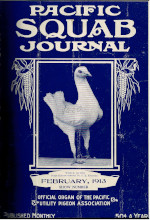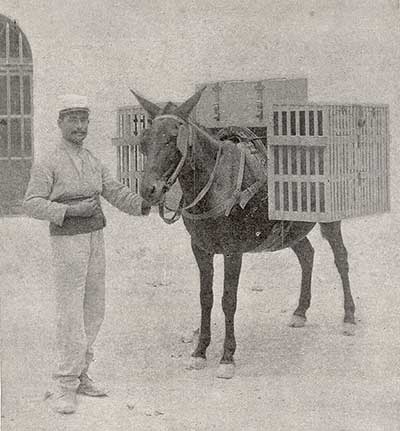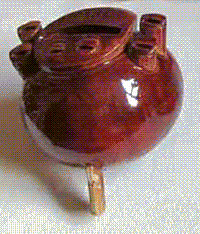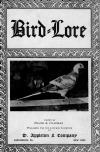
| Dovecotes of FranceIn the Fall of 2008 the Pigeoncote hosts explored Brittany, France to record the many dovecotes to be found in that region. The trip covers 19 days and the pages are layout to make following along easy. Come take a look at the dovecotes of Brittany. | ||
| Join the fun and help identify these dovecotesTake a virtual Easter "egg hunt" and then go beyond virtual. The
field is where its at. Perhaps you can even supply a modern photograph of the dovecotes Kathy took over 30 years ago. |
||
 |
Book of DovecotesThe Pigeon Cote Presents,
the fully annotated second edition of Dovecotes of Great Britain.
We made our first visit to Great Britain in 1998 to record the dovecotes
of old described by Cooke in his work Book of Dovecotes. We were very
happy to find that many, many of the dovecotes he described nearly one hundred
years ago are not only still there, but many have found loving sponsors that
have maintained them in pristine condition.
In 2006 we made a second trip to try to find some we just didn't have time
to get to during our previous five week visit, and we again were well rewarded.
It took me until 2008 to prepare all the new material and include it on the
updated web site. We have added a lot of annotation, displayed in green
on standard browsers, and many more photographs. Here is a site you can visit time and again with some great colored photography of many of the cotes. Cooke's original work is shown as plain black text so you can easily distinguish Cooke's original work from the annotations provided by so many. Thanks to you all. |

|
The American Pigeon Journal or the APJ as it is commonly known started in California in 1913. While it was not the first American magazine devoted to pigeons it was the longest running from 1913- 1994. Alas 1994 only saw one issue, but is still 81 years. A remarkable accomplishment. As with all of these lively side icons, just give them a click to learn more. |
||
| Viewing pigeon magazine covers is a fun way to discover the the grandeur of many of the available breeds. Magazines often display a specific breed on most of their covers. In addition to the covers, many listing now also include an index to articles so you can see just what the folks are all talking about, and who was doing the talking. A few of the magazines that are out of copyright have been made into PDF files that can be viewed on line or downloaded for offline viewing and searching. Yes, for free. No strings attached. It is an ongoing effort and a few are added each month. | |||
| |
|||
 |
Parachuting PigeonsScience and Mechanics: fall issue of 1943 provided a short piece on the use of pigeons in WWII by the U.S. Army. Pigeons and Paratroopers are in concert behind enemy lines. The soldiers, along with the pigeon companions are in wire baskets or strapped to soldiers' chests, are dropped by parachute to enable the carrier pigeons to fly messages back to headquarters when radio or runners cannot be used. The Maidenform bra company made these devices and that is whay they are at times called bras. While the article is a bit short it is replete with excellent photos of the time. |
||
 |
Lancaster National PigeonThe Lancaster National Pigeon Show Slide Show: Every year the National Pigeon Association puts on a pigeon show of national scope. It is the largest pigeon show in the United States with thousands of pigeons in hundreds of breeds competing for the top honors. While this event while naturally better viewed in the feather, this virtual walk through will help you understand how pigeon shows actually work and well as provide more information and photographs of some of the winning birds at the show. |
||
 |
Pigeon Color Slide Show:This introduction to pigeon colors with a touch about pigeon genetics, was the first, and now 10 years later, the only pigeon slide show on the web. The show walks you through the idiosyncrasies of pigeon color names and the genetic variations that made them come about. Come find out just what pigeon so called blue and red pigeon is anyway. |
||
 |
Freed at SeaScientific American in the August 17, 1895 issue published the method and results of their experiment of releasing pigeons at sea to learn if they could be a valuable asset to navigation, and as any pigeon fancier knows - they not only could - they did. Read the entire article here to learn more. |
||
  |
Carrier Pigeons in the Frence ArmyScientific American in its July 12th, 1913, issue presented an article about carrier pigeons being used by the French army even though the wireless telegraph had become available. The Hertzian waves as it was called then was still considered a bit new fangled and unreliable, while the pigeons had proven themselves over the centuries. |
||
 |
Pigeon WhistlesPigeon whistles have been heard in the skies over China for well over a hundred years. The National Geographic provided a short article on the subject in the early 1900's. Whistles are attached to the pigeon's tail and when they fly as a flock, make a very melodious song. They are made of very, very light weight materials originally shellacked paper or bamboo. The rather substantial pigeon whistle shown here weights only one half once. |
||
National GeographicThe January 1926 issue of the National Geographic features the article. Man's Feathered Friends of Longest Standing. It started out with a picture of the First Lady Mrs.Calvin Coolidge releasing a pigeon from the White House portico. Many other notables involved with the hobby, including the King of England, are covered as well. . It is well illustrated, as most NG articles, but also includes several color paintings by Hashime Murayama, which are well worth viewing by themselves. A must read pigeon article! |
|||
 |
Passenger PigeonBird Lore was published six times per year for the National Audubon Society. It featured articles about different bird species, with photographs and beautiful color plates. The volume featured here, for March-April 1913, has four articles about the Passenger Pigeon. At that time, there was only one known specimen left so the sorry demise could not be altered. |
||
Racing Homers 1800'sPigeon Racing has been a sport in America as in Europe for well over 100 years. The Century Magazine did an extensive article on the subject way back in 1886 which is fully illustrated. This article has been modified just a bit to fit a web page. Delve into this fascinating hobby of today and as you now know many yesterdays ago. |
|||
 |
Weak Brain? Eat canned squab |
![]()